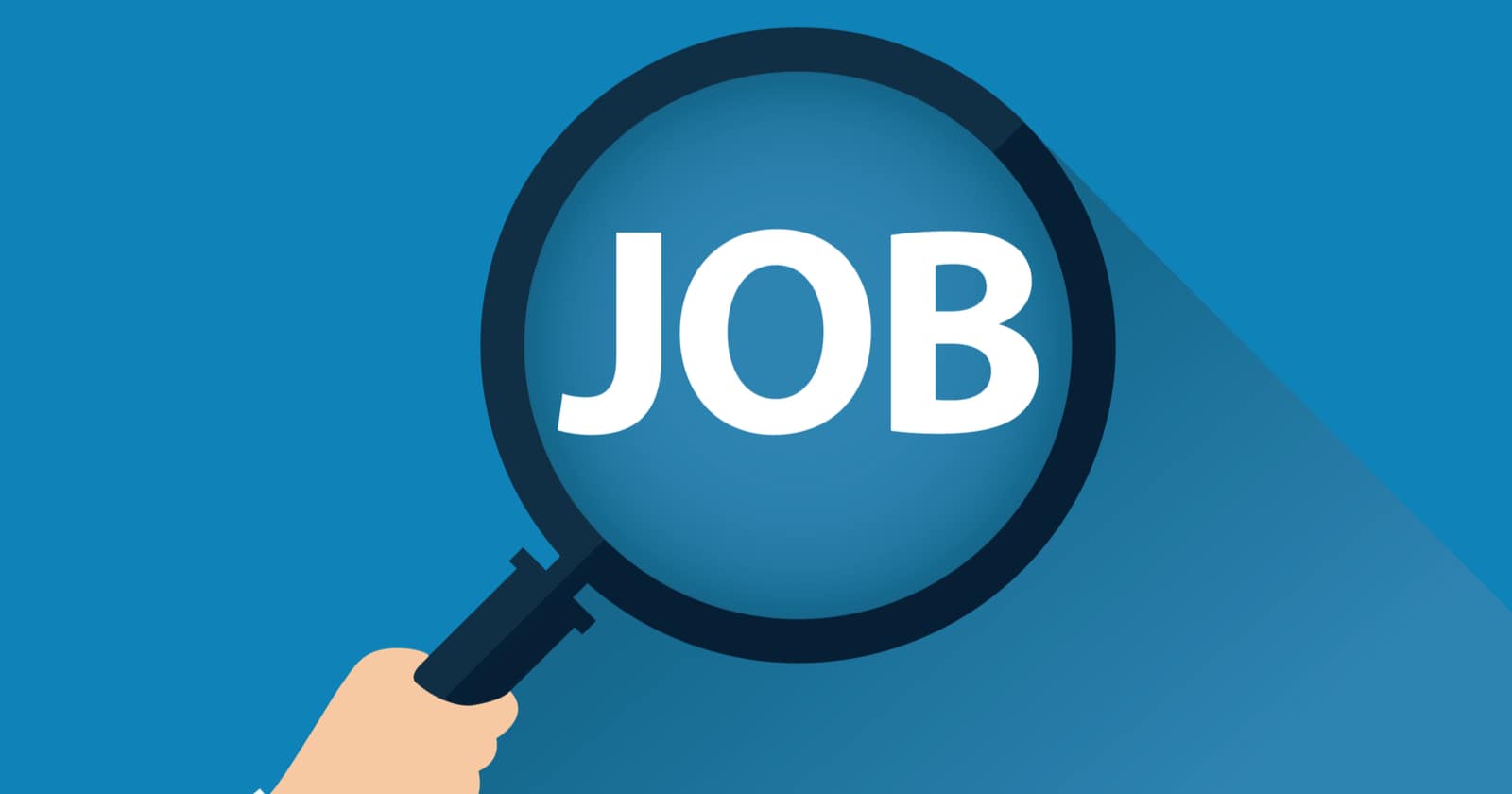7 Step Recruitment Process for The Hybrid Age
Data integrated org chart based planning tools.
Agile job planning with integrated task.
IT and Cloud architecture tools for all platforms.
Product Management & Software Architecture.
Brainstorm, strategy projects and organize assets.
Process, Value chain and System analysis tools.
A visual workspace for students and teachers.
Run Meetings, Workshops or get feedback.
Document, plan and enhance company.
Idea to execution on a single collective.
Enterprise-grade security & team cooperation.
Visit
Sign Up Free
Home.
Solutions.
Strategy Execution Software HR Planning Software IT & Operations Planning Project Management Software Business Process Management Creately for Software Teams Production & Manufacturing Planning Creately for Education Creately for Marketers
Resources.
Plans.
Features.
Templates.
Blog.
Affiliate Program.
Enterprise.
Contact Sales.
Resources.
HR Planning.
7 Step Recruitment Process for the Hybrid Age.
7 Step Recruitment Process for the Hybrid Age
Importance of a Well-Defined Recruitment Process.
Developing a Foolproof Recruitment Process.
Employee Recruitment Best Practices to Keep in Mind.
Recruitment Process Effectiveness Metrics.
What’s Your Recruitment Process?
Increasing candidate circulation and conversion rate has actually ended up being a typical difficulty in numerous organizations. To draw in the best talent at the correct time, you need to have an effective recruitment procedure in location.
Among our major goals for employment this year has actually ended up being expanding our team. In the start, there was naturally a requirement to revisit our recruitment procedure to see what we could do to increase our candidate conversion rate.
We started by re-defining our recruitment process according to our employing requirements. As an outcome, we were effectively able to improve prospect experience which led to much better candidate conversion.
In this post, we will share our optimized recruitment procedure and the steps we required to optimize it.
Importance of a Well-Defined Recruitment Process.
Developing a Foolproof Recruitment Process.
Employee Recruitment Best Practices to Keep in Mind.
Recruitment Process Effectiveness Metrics.
Importance of a Well-Defined Recruitment Process
A well-defined recruitment procedure is crucial for companies to effectively and effectively determine, bring in, and choose the most appropriate prospects for their job openings. It provides a structured structure for working with managers and HR professionals to follow, ensuring consistency and fairness throughout the recruitment process.
A well-structured recruitment process helps bring in premium candidates by providing the company as expert and organized. It enables companies to efficiently communicate their company brand, worths, and task requirements to prospective applicants, increasing the likelihood of drawing in certified candidates.
Having a distinct recruitment process saves time and lowers expenses related to hiring. Clear guidelines and standardized procedures streamline the entire recruitment cycle, from developing job descriptions and advertising vacancies to performing interviews and making offers. This performance leads to faster hiring choices and lowers the opportunities of making costly mistakes.
A standardized recruitment procedure promotes fairness and equivalent chance for all candidates. It makes sure that each applicant is evaluated based upon the same requirements and treatments, getting rid of biases and favoritism. Consistency in the choice procedure assists secure the company from possible legal concerns connected to discrimination and promotes a varied and inclusive workforce.
An effective recruitment procedure produces a favorable impression of the company in the minds of prospects, regardless of whether they are eventually employed or not. By offering clear interaction, timely updates, and a smooth candidate journey, companies can build their reputation as an employer of choice. A positive prospect experience can result in better employer branding, word-of-mouth referrals, and a larger talent pool for future openings.
A structured recruitment process enables better decision-making by offering an organized approach to evaluate and compare candidates. It allows hiring managers to evaluate prospects based upon predetermined requirements, such as abilities, credentials, experience, and cultural fit. This decreases the subjectivity in the decision-making process and increases the chances of picking the most ideal prospect for the role.
A good recruitment process sets the phase for a smooth onboarding experience. When the working with procedure is well-structured and candidates have a clear understanding of their functions and responsibilities, they are more most likely to shift effortlessly into their brand-new positions. Effective onboarding increases employee engagement, complete satisfaction, and retention rates, reducing the expenses and efforts connected with turnover.
Developing a Sure-fire Recruitment Process
The recruitment procedure may differ from business to business based on the organizational structure, selection process, nature of operations, etc. But any well-planned recruitment process ought to help the working with group hire the best prospect.
Here at Creately, we follow a 7-step recruitment process that helps us discover, attract and keep the ideal type of candidates. The actions are;
1. Identify the working with needs.
2. Prepare job descriptions.
3. Devise recruitment method.
4. Screen and shortlist candidates.
5. Conduct interviews.
6. Evaluate and make the offer.
7. Onboard the brand-new staff member.
Step 1: Identify the working with requirements
What are your existing working with requirements? May be a staff member just left or a new task position just opened. Once you recognize the jobs that exist, you can then specify the task specs such as abilities, knowledge, experience, etc.
This step includes determining the organization’s staffing requirements. For instance, a growing tech startup might determine the need to hire a task supervisor, a software engineer, and a marketing professional to support their broadening operations. You can determine your working with requirements by checking,
– Any spaces in performance, skills or efficiencies that you require to fill.
– An abrupt increase in workload that your group can not appear to manage.
– Any workers who will be leaving the company soon.
At Creately, we utilize an org chart that lists the existing workers and their skills. This helps us see at a glance what abilities exist within our company and what skills we require going forward. The org chart will be updated with each new hire.
Step 2: Prepare task descriptions
Once you know the skills, knowledge and experience gaps you need to fill, define the task function, responsibilities and tasks.
A total job description helps you understand what to look for in potential candidates. It also functions as a list for candidates to tick before they choose they appropriate for the function and employment use – which indicates, more relevant candidates. For example, a job description for a job supervisor may consist of tasks such as managing job timelines, handling resources, and ensuring effective communication amongst employee.
The elements that need to be included in a job description are
– Title.
– Responsibilities.
– Necessary credentials and abilities.
– Compensation, benefits, and perks.
– Location.
Here’s a neat little technique we follow at Creately – prior to writing the task description – we go above and beyond to create a candidate personality.
Similar to the buyer personality, the task candidate persona is a semi-fictional portrayal of an ideal prospect for the position you are hiring for.
Creating a candidate personality assists you recognize what your candidate is looking for, how and employment where to discover them. And it gives you the opportunity to
– Write more relevant job descriptions, job application kinds, emails, employment training material, and so on).
– Identify the best-recruiting channels.
– Create premium and individualized content to attract pertinent candidates.
– Understand the prospect requirements of your stakeholders.
– Update and reuse in the future.
Step 3: Devise your recruitment technique
This is where you choose how to bring in and maintain the perfect candidates. Here you ought to consider whether you can find a possible candidate from within the company itself or whether you need to hire from outdoors.
In your strategy, you need to think about
– The geographical area you’ll be targeting.
– The approach of recruitment (worker referrals, social networks, video interviews, and employment so on).
– Creating pertinent job ads.
– Channels for posting job ads (social media networks, task boards, business websites, etc).
And we understand that it would can be found in convenient to have actually outlined the whole recruitment process in the shape of a flowchart.
This assisted us keep the procedure efficient, keep the entire hiring group on the very same page, ensure that we stay with the plan and avoid no important action.
Step 4: Screen and shortlist prospects
Your recruitment technique was a substantial success and have actually built up a sky-high stack of application. What’s next?
Here are the steps we follow when we face this precise challenge
– First, we sort through the applications to find the ones with minimum credentials.
– Then we different resumes with the favored credentials. Here we consider the candidate’s experiences, certifications, domain and technical proficiencies, and skills. For instance, if we receive 100 applications for a software application engineer position, we shortlist 10 prospects based upon their educational background and appropriate experience.
– Those prospects who have the minimum credentials and the needed credentials will be shortlisted.
– If there are any issues regarding their application, we ‘d make a note so we can get it clarified throughout the interview.
Step 5: Interview Process
After the application or the task advert, this is where your possible prospect will come in direct contact with you. So it’s time to make a great impression on them as a prospective company.
Interviews can take numerous kinds, such as phone screenings, video interviews, or in-person conferences. During the interviews, the organization examines the candidates’ abilities, interpersonal abilities, and cultural fit. Behavioral and situational concerns may be asked to assess how prospects handle specific situations.
And this is where you need to be concerned about candidate experience the a lot of.
Here’s what we did to improve the candidate experience
Visualized interview program
To make it easy for both our team and the candidate, we have actually envisioned the interview procedure. It’s clear and assists eliminate any confusion.
We would connect it with the very first email we send to our picked candidate. This assists them understand what the procedure is, how much time it will take and prepare themselves accordingly.
We ‘d share the visual, highlighting the completed actions and the next step they require to get ready for in the next couple of emails.

Let them book more effective time slots themselves
Being flexible and showing a determination to work around the schedule of your prospect is an excellent plus for you. From our phone screening sessions to conversation sessions, we would let the candidate book a time slot (based on the availability of time slots) themselves with Calendly.
We ‘d merely share the link in the relevant e-mail making it seamless for both of us.
Step 6: Make the offer
This is the time to consult the candidate’s referrals and examine each prospect’s performance and picks the most ideal prospect for the position. This step involves assessing factors like credentials, experience, interview performance, and positioning with the company culture. Once the decision is made, the company extends a job deal to the chosen candidate(s), including details such as income, benefits, and start date.
However, there’s an opportunity that the very first promising prospect you have picked might not accept it. In which case, you require to be prepared to extend the offer to the second finest or third finest prospect.
Step 7: Employee Onboarding
Then comes employee onboarding. This is where you make the new staff member settle in. This does not just consist of showing the beginner around the workplace and introducing them to others.
This action includes offering required paperwork, presenting the new staff member to the team, acquainting them with business policies and procedures, and establishing any required training or orientation programs. For instance, the brand-new employee might be appointed a mentor or offered with a staff member handbook to facilitate their integration into the organization. We’ve covered this subject in these 2 resources in more information.
Employee Recruitment Best Practices to Bear In Mind
1. Define clear task requirements
Clearly describe the job requirements, consisting of skills, credentials, and experience needed for the position. This helps bring in prospects who closely match the wanted requirements.
2. Develop an engaging employer brand name
Build a strong employer brand name by showcasing the company’s worths, culture, and benefits. Highlight the special elements that make your company an attractive place to work, which can assist bring in leading skill.
3. Utilize numerous sourcing channels
Don’t restrict yourself to simply one sourcing channel. Get the word out about task openings through online platforms, social networks, and even ask your existing workers for recommendations. The more opportunities you check out, the more skill you’ll find.
4. Streamline the application process
Keep the application procedure basic and worry-free. Minimize the number of actions and needed documents, and offer clear instructions. An easy and straightforward application process enhances the candidate experience and motivates more applicants to finish the procedure.
5. Conduct comprehensive screening and evaluation
Put in the time to really learn more about the prospects. Review their resumes, conduct skill evaluations, and hold interviews. By looking beyond the surface, you’ll discover those diamonds in the rough.
6. Implement structured interviews

Use structured interviews with the very same set of concerns for all candidates. This levels the playing field and ensures everybody gets a reasonable shot. Plus, it assists you make more accurate comparisons between candidates.
7. Involve multiple stakeholders
Involve others in the recruitment procedure. Your associates and employee can provide valuable insights and assist examine candidates. Together, you’ll make much better choices and discover the best fit.
8. Provide a positive prospect experience
Treat prospects like VIPs. Keep them informed, offer updates, and deal useful feedback even if they don’t make it. A positive prospect experience will leave a lasting impression and encourage them to recommend your business to others.
9. Conduct thorough background checks
Before making an offer, make certain to carry out comprehensive background checks. It’s always better to be safe than sorry. Verify certifications, work history, and certifications to guarantee you’re getting the genuine offer.
10. Continuously assess and enhance the recruitment procedure
Regularly evaluation and assess the effectiveness of your recruitment process. Collect feedback from employing supervisors, prospects, and other stakeholders to recognize locations for improvement. Then, make tweaks and modifications to make the procedure even better next time.
Recruitment Process Effectiveness Metrics
Recruiting metrics specify measurements utilized to assess and analyze the effectiveness, performance, and success of the recruitment process. These metrics provide important insights and information that assist employers and employing groups make notified decisions and enhance their recruitment techniques. To examine the efficiency of the recruitment procedure, you can track the following metrics:
Time-to-fill: Measures the speed of filling vacancies. A much shorter time-to-fill shows effective recruitment procedures and lowers the time a position stays vacant.
Cost-per-hire: Calculates the costs of hiring brand-new employees. Tracking cost-per-hire helps optimize recruitment spending plan allotment.
Quality-of-hire: Assesses the performance and contribution of brand-new hires. A premium hire positively affects the organization’s productivity and success.
Applicant-to-interview ratio: Indicates the conversion rate from applicants to interviews. A low ratio may recommend inadequate screening techniques or an absence of certified prospects.
Offer acceptance rate: Measures the portion of accepted task offers. A high acceptance rate indicates effective candidate destination, favorable company branding, and competitive compensation plans.
Source of hire: Tracks the channels that yield effective hires. Understanding the most reliable sourcing channels assists enhance recruitment marketing and concentrate on channels that yield the very best results.
Candidate experience: Evaluates candidate satisfaction throughout the process. A favorable prospect experience assists bring in top talent and enhances the organization’s company brand.
Diversity and addition metrics: Measures representation of underrepresented groups. Tracking variety metrics helps assess progress towards variety and employment addition objectives and promotes a more inclusive labor force.
Offer-to-acceptance ratio: Tracks the portion of accepted job offers. A low ratio might show concerns with the offer bundle, misalignment between prospect expectations and business offerings, or weak points in the settlement procedure.
Retention rate: Measures the percentage of new hires kept. A high retention rate recommends effective recruitment and onboarding procedures.
What’s Your Recruitment Process?
These steps have helped us streamline and simplify our recruitment procedure. But we haven’t ended it there. We frequently monitor it to see how it’s carrying out, which assists us keep it enhanced.
However, these steps might not fit all companies as a recruitment procedure is organization-specific. But it doesn’t imply you can not customize these actions to fit your own requirements. Do share with us what additional actions you follow in your process in the remark section below.
Join over thousands of companies that utilize Creately to brainstorm, plan, examine, and execute their jobs effectively.
FAQs on the Recruitment Process
How to leverage innovation to simplify the recruitment process?
Automated job distribution systems can help reach a bigger audience quickly and efficiently. Additionally, applicant tracking systems (ATS) can help in managing and arranging candidate information, making it simpler to identify ideal candidates from a big swimming pool of applicants.
Pre-employment assessment tools can be utilized to evaluate prospects’ abilities and abilities, providing unbiased information to examine their suitability for the position.
Video interviewing platforms offer functions like tape-recording interviews, sharing them with the employing team, and carrying out virtual panel interviews. This conserves time and resources, especially for geographically dispersed prospects.
Candidate Relationship Management systems save prospect info, track interactions, and supply insights into the candidate pipeline. Automated communication tools can send out customized emails, updates, and alerts to candidates, enhancing their experience and keeping them engaged throughout the procedure.
AI-powered tools can help in examining prospect certifications, skills, and cultural fit. AI algorithms evaluate big information sets to determine patterns and forecast prospect success based upon historical working with information.
Collaboration tools, such as project management platforms and shared document repositories, make it possible for efficient interaction and collaboration amongst employing teams.
Online portals and finding out management systems (LMS) can provide training materials, orientation programs, and business resources, ensuring a smooth transition for brand-new workers.
What are the benefits and functionality of candidate tracking systems?
A Candidate Tracking System (ATS) is a software tool designed to simplify and automate the recruitment procedure. ATS platforms are commonly utilized by HR departments, recruiters, and working with supervisors to manage the entire hiring procedure, from job publishing to onboarding. Popular ATS choices include tools like Workable, Greenhouse, Lever, iCIMS, and BambooHR.
– ATS platforms act as a central database for all candidate-related details, including resumes, applications, and interview feedback.
– They immediately parse and screen resumes based on predefined criteria and keywords assisting filter out unqualified candidates.
– They help with partnership amongst employing groups by permitting several users to access and evaluation candidate profiles, share feedback, and communicate within the system.
– ATS systems allow recruiters to track the development of candidates throughout the employing procedure.
– They supply important insights and metrics connected to recruitment processes, such as time-to-fill, source of candidates, and applicant demographics.
What are the typical problems in recruitment?
Recruitment processes can encounter numerous challenges and issues that can impede the efficiency and efficiency of working with. Some typical problems in recruitment consist of:
Talent lack: Difficulty in finding qualified candidates with the needed skills and experience for specific roles.
Lengthy time-to-fill: Delays in filling job vacancies, which can arise from a complex or prolonged recruitment process, causing increased costs and productivity loss.
High competitors: Facing intense competitors from other employers for top skill, especially in industries where there is high need for specialized skills.
Limited resources: Limited budget plan, workforce, or technology resources for recruitment, which can affect the capability to draw in and hire high-quality prospects.
Changing task market: Adapting to progressing task market patterns, consisting of shifts in prospect choices, ability requirements, and emerging job functions.
Cultural fit: Ensuring prospects line up with the company’s values, work culture, and team characteristics, as a poor cultural fit can cause frustration and possible turnover.
Evolving recruitment innovation: Keeping up with developments in recruitment technology, synthetic intelligence, and automation tools, to streamline processes and remain competitive.
Author
Amanda Athuraliya is the interaction specialist/content author at Creately, online diagramming and partnership tool. She is an avid reader, a budding writer and a passionate scientist who enjoys to write about all type of topics.
Thank you for your input. We will evaluate your remarks and continue with approval.


